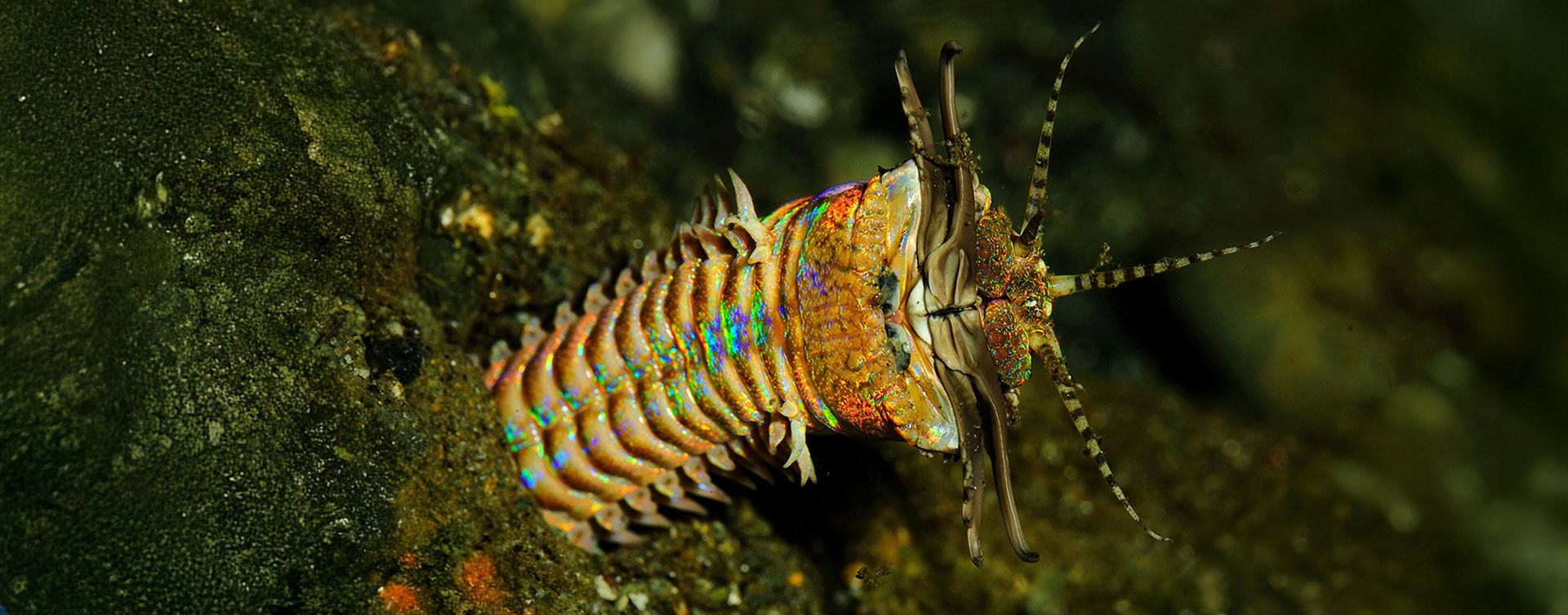
The world's oceans are filled with an amazing assortment of marine life. Some are abundant and well-known to divers; others are rare and exotic. Finding one of these unique creatures adds excitement to the underwater experience. Here are six rare and intriguing marine life finds that lucky dives may run across at popular sites around the world.
A Caribbean Enigma
St. Lucia divemasters tell tales of a sea monster known as “The Thing” that lurks in the shadowy recesses of the island's coral reefs. The first known images of this bizarre creature were captured by underwater photojournalist Walt Stearns during a night dive on Anse Chastanet Reef. What he found was a creature related to marine bristle worms – but much larger. There have been a handful of similar sightings in the years since, both in St. Lucia and on a reef in Cozumel, and marine biologists have suggested that this may be a new species known as Eunice roussaei. This species is thought to prowl on coral reefs where it's long, slim body enables it to slither into crevices in search of prey. The specimen Stearns documented was estimated at four feet in length, while other later sightings describe a creature more than six feet long. “The Thing” comes out at night, and that's when a dive light might reveal its stealthy presence.
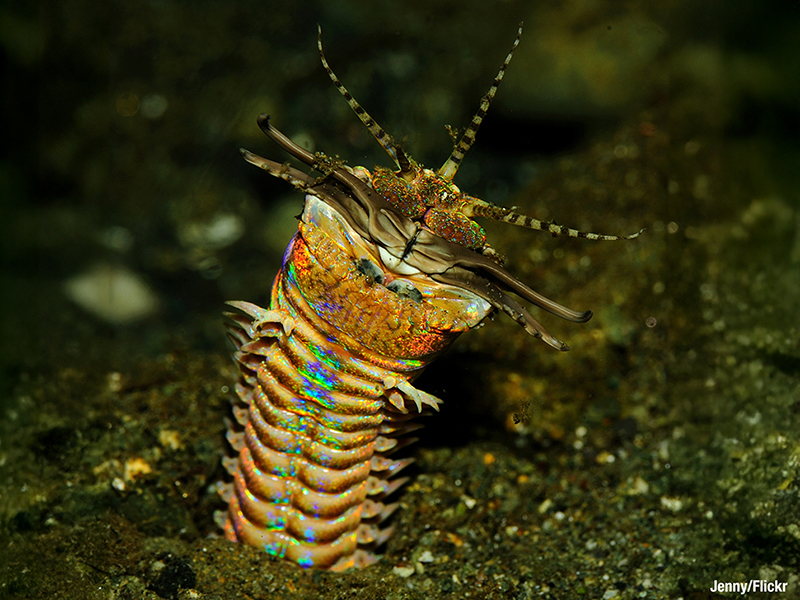
The Master of Illusions
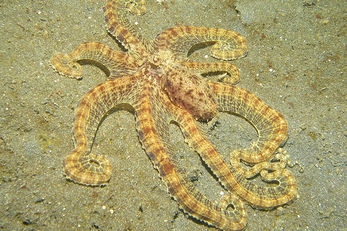
The Mimic Octopus is the ocean's undisputed master of illusion. Unknown to science until the late 1990s, this clever mid-sized cephalopod has an uncanny ability to imitate at least 15 different species of marine life. Like other octopus, its skin has special pigment sacs that allow the mimic to transform its dull-brown body into a range of colors and patterns. But its real talent is shape shifting by extending, bending and combining each of the eight tentacles. It can pop its head into a hole and extend joined tentacles in opposite directions to impersonate a sea snake, flair the tentacles in a spine-like profile to imitate a lionfish, clench everything together behind it's head to mimic the shape of a toxic ray, undulate like a jellyfish, drift like seaweed and much more. Divers have the best chance of catching one of these performances when diving in Sulawesi, Indonesia, but there have been reports of sightings in the waters of Australia and Malaysia.
The Grooviest Frog
Frogfish are famous for camouflaging their bodies to hide in plain sight. One of the rarest of these masters of concealment is the recently discovered psychedelic frogfish. First seen in 2008 by a divemaster in the shallow waters of Indonesia's Ambon Island, this frogfish is covered in a bright pattern of tan and peach zebra stripes that are unique to individual fish – the full-body equivalent of a fingerprint. This coloration choice seems bold when the frogfish is exposed. But once it settles into a crevice, the pattern mimics the colors of certain corals, allowing the fish to blend into the reef. Finding a psychedelic frogfish is made even more difficult by its diminutive profile, as these fish are typically less than four inches in size. With a known range limited to a small area of Indonesia's Banda Sea, a diver's only chance of seeing one would be during a liveaboard trip to this region.
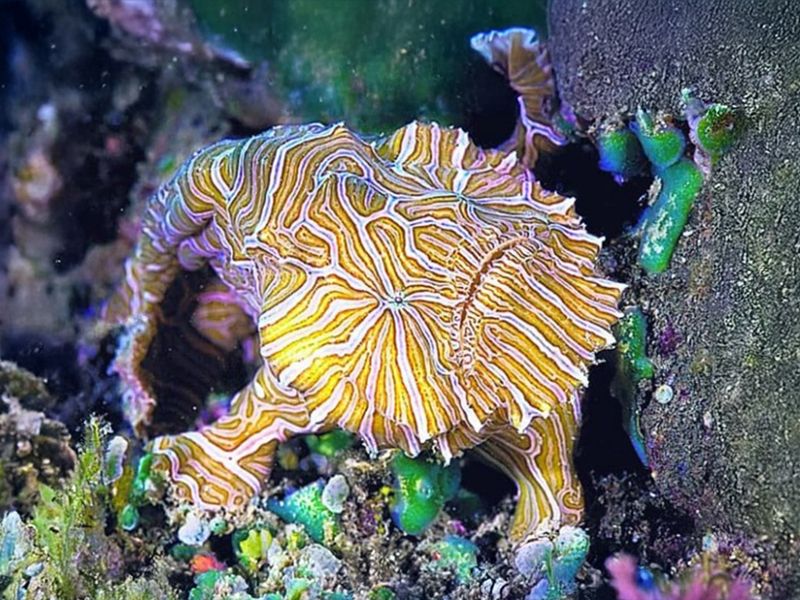
The Reef's Cartoon Character

Scientists call it Thecacera pacifica, but everyone else calls this diminutive sea slug the Pikachu nudibranch, and the reasons why are obvious. This real-life counterpart to the Japanese anime mouse sports a similarly bright-yellow body and black-tipped spikes that resemble the character's ears. Typically smaller than three inches in length, these nudibranchs may be spotted coral reefs, silty shallows or seagrass beds across a wide swath of tropical Indo-Pacific waters, but they remain a relatively rare and prized find. They feed on small worms and absorb toxins from the worms into their skin to make themselves poisonous to prey. Rather than blend in, they use their bright coloration as a biological hazmat warning to would-be predators. Some of the best places to start a hunt for a Picachu are muck-diving hotspots such as Anilao and Dumagette in the Philippines, Indonesia's Lembeh Strait, Mabul Island in Malaysia and Milne Bay in Papua New Guinea.
Electric Saws
They may look like sharks wielding a chainsaw, but sawfish are actually members of the ray family. Much like stingrays, they prefer nearshore waters where they hunt using special electroreceptive organs in their head that pick up on the tiny electric currents produced by fish and crustaceans. When a sawfish detects prey it will swipe its barbed saw in a slashing motion to impale its victim on a spike or pin it against the seabed with the flat side of the blade. There are five known species of sawfish living in shallow coastal waters and river mouths around the world, but the smalltooth sawfish is found only in the northern Caribbean and tropical Atlantic. Smalltooths can grow to lengths of up to 16 feet, including the blade, but sightings are rare as this species is now considered endangered. Lucky divers might come across one on shallow sites in the Florida Keys, Bahamas and Cuba.
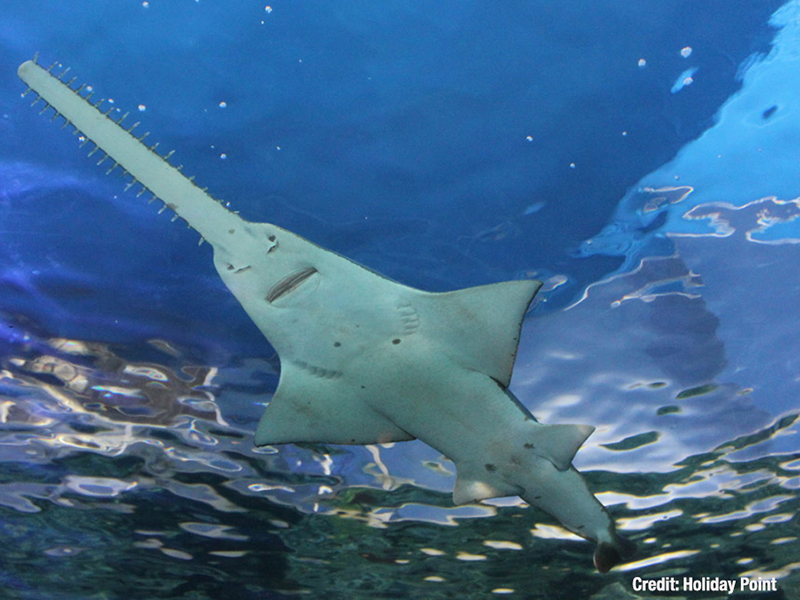
Mexico's Hard-Shell Maternity Ward
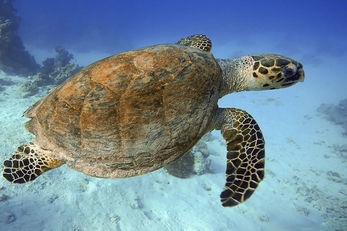
The Kemp's Ridley is the smallest of the seven known species of sea turtles. And also the rarest. They are found mostly on the western shores of the Gulf of Mexico, and sometimes roam as far as the Bahamas and the Atlantic beaches of southern US states. Kemp's Ridleys spend much of their time in shallow waters hunting for crabs and shrimp on seagrass beds, sandy bottoms or shallow patch reefs. Unlike other species of sea turtles that lay solitary nests, female Kemp's Ridleys coordinate their egg laying and come ashore by the hundreds on the same beach. This mass egg-laying event takes place on a deserted beach in the northeastern coast of Mexico. After the gathering, the mother turtles disperse, with some moving south to the waters of Cancun, Cozumel and the Riviera Maya. It's here that divers may have a chance to see one. Things to look for are a turtle under two feet in size with a triangular-shaped head, a hooked beak and a gray-green shell that's almost as wide as it is long.